
Anniversary
Two Decades of Excellence
ACTA is proud to celebrate its 20th anniversary of operations. Since its opening in April of 2002, more than 55 million TEUs have been moved on the corridor—significantly reducing truck traffic in the port communities and beyond. It is estimated that the corridor has eliminated over 3 billion truck miles traveled on regional highways. Additionally, just considering the direct benefits of grade crossing removal, the corridor has reduced NOx emissions by 4520 tons and Co2 emissions by close to 1 million tons over its lifetime.

Suzie Price
Throughout my time as an elected official, it has been an honor to serve on ACTA as the Chair as well as work collaboratively with my fellow board members and the fantastic staff. My greatest memories have been the incredible dedication that everyone commits to at every level of ACTA. Throughout good times and challenging
…
Throughout my time as an elected official, it has been an honor to serve on ACTA as the Chair as well as work collaboratively with my fellow board members and the fantastic staff. My greatest memories have been the incredible dedication that everyone commits to at every level of ACTA. Throughout good times and challenging times, everyone in the organization is focused on ensuring ACTA continues to be a leader in the goods movement as they understand the huge role they play in global logistics and economics for Americans all across the country. Keeping goods and shipping moving along with our economy driving forward has been possible for ACTA because of the deep commitment to investing and maintaining infrastructure, and safety, not to mention its continual prioritization of financial strength and regional employment opportunities. For me, the unparalleled drive of everyone who works in ACTA is something to take pride in, and the reason for its ongoing success.

Michael Leue
It’s such a thrill to be at ACTA to celebrate 20 years of service. I have enjoyed a career working in, and fascinated by, goods movement. I watched containerization blossom in the 80’s when the Ports stepped forward with a strong commitment to intermodal rail. The Alameda Corridor was a major part of that commitment.
…
It’s such a thrill to be at ACTA to celebrate 20 years of service. I have enjoyed a career working in, and fascinated by, goods movement. I watched containerization blossom in the 80’s when the Ports stepped forward with a strong commitment to intermodal rail. The Alameda Corridor was a major part of that commitment. It wasn’t enough to build on-dock and near-dock rail, which was gutsy in itself; the Ports knew they needed to provide efficient landside transportation systems. They grade separated the entire roadway network within the Ports and decided to give that same treatment to the surrounding communities. The high-capacity, high-speed Alameda Corridor was born of this vision. My work at the Ports had always involved rail transport, and I admired the work of ACTA. To see such a remarkable public works project come to fruition and to witness the enormous positive impacts on the surrounding communities and on air-quality throughout the region was an inspiration. Then, to be able to join and lead the organization in 2020—as it moved into its next decade of service? It was a great opportunity. I look forward to continuing to work with the ACTA Governing Board, staff, Ports of Los Angeles and Long Beach, and BNSF and Union Pacific railroads in moving goods safely and efficiently to the rest of the nation for many years to come.
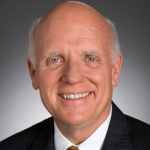
Rollin Bredenberg
For most of my career with Southern Pacific and all of my career with BNSF I was involved with the operation and steady growth of container volume through the ports of Los Angeles and Long Beach. By 2001 it was not at all clear that the railroads would be able to keep up with the
…
For most of my career with Southern Pacific and all of my career with BNSF I was involved with the operation and steady growth of container volume through the ports of Los Angeles and Long Beach. By 2001 it was not at all clear that the railroads would be able to keep up with the volumes of containers on the ports by moving the trains currently on the legacy facilities until the Corridor was completed. BNSF had only the former Santa Fe Harbor sub which was a slow route through Inglewood and Torrance over dozens of road crossings. Complaints from mayors and other elected officials and citizens were fielded daily. On some days BNSF ran sixteen trains on this route and that was not enough to keep current. UP made capacity available to BNSF to run the excess trains right up until the Corridor opened for business. The operational cooperation between these two competitors during the Corridor planning and implementation was the best I ever witnessed. To this day both railroads operate fluidly through the corridor and onto the ports through PHL on a well designed and constructed facility.

John T. Doherty
Happy 20th Birthday ACTA! What a privilege it was to spend 25 years of my career on the project’s planning, design, construction and operations. Much remembered is the professionalism of all the staff, consultants, and contractors that supported and continue to support ACTA’s mission. I’m a “construction guy” at heart, so I have many vivid
…
Happy 20th Birthday ACTA! What a privilege it was to spend 25 years of my career on the project’s planning, design, construction and operations. Much remembered is the professionalism of all the staff, consultants, and contractors that supported and continue to support ACTA’s mission. I’m a “construction guy” at heart, so I have many vivid memories of the collaboration that was needed to solve construction issues as each arose that enabled the Corridor’s on time and onbudget opening in April 2002. At its peak, there were over 1,000 construction workers along the 20-mile corridor with total costs exceeding $1M per day. Kudos to those workers. And kudos to all the planning, engineering, financial, legal, job development, and advocacy professionals; as well as to the elected officials, government entities and railroad partners whose efforts led to the successful completion 20 years ago. While attending those April 2002 grand opening festivities, the 2020s seemed such a long way off yet here we are. Congratulations to all.
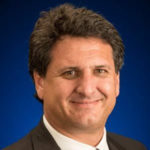
Tony Gioiello
It has been my honor to play a small role in the history of the Alameda Corridor during these past twenty years. The Corridor is perhaps the most important public works project built to support the growth of cargo moving to and from the San Pedro Bay Port complex while providing environmental benefits and quality
…
It has been my honor to play a small role in the history of the Alameda Corridor during these past twenty years. The Corridor is perhaps the most important public works project built to support the growth of cargo moving to and from the San Pedro Bay Port complex while providing environmental benefits and quality of life improvements for the surrounding communities. Although the engineering and construction of the Corridor is a tremendous feat, I am just as amazed with the almost twenty years of pre-construction activity it took to make the Corridor a reality. The Alameda Corridor became a model for public-private partnerships. From the early days of planning to the formation of the governing Joint Power Authority, to permitting, endless negotiations, land acquisitions, financing, and coalescing support from a multitude of government agencies this project would not have been completed if not for the leadership and dedication of those early visionaries.
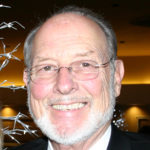
James C. Hankla
When I retired as City Manager of Long Beach after twelve years, I planned to create a recruiting firm for high level public servants. I didn’t expect to be overseeing digging a hole through the middle of LA County. Nevertheless, that was what I did. The project was a gift from GOD. Can you imagine
…
When I retired as City Manager of Long Beach after twelve years, I planned to create a recruiting firm for high level public servants. I didn’t expect to be overseeing digging a hole through the middle of LA County. Nevertheless, that was what I did. The project was a gift from GOD. Can you imagine the supply chain crisis without the Alameda Corridor? My philosophy of management was not typically bureaucratic, where you use existing processes for all problems. Rather, it is to create tools and processes for the challenge at hand and put the right people in charge of solving those problems. Fortunately for me many of those right people were already in place. But they had to become a team and our finance functions needed to be strengthened. Legal and engineering were terrific except we needed a good owners rep. We got one! One of the biggest challenges was to get the corridor cities to become part of the solution instead of part of the problem. The Board was a dream to work with. The politicians were totally non-political about corridor business. At project conclusion (revenue service) a post project audit found that:” It was a thing that dreams are made of”. This project together with the Aquarium of the Pacific are the ones in my 52-year career in public service that I am the proudest of! Thank you, GOD.

Gill V. Hicks
The Alameda Corridor has been the highlight of my professional career. My involvement began in 1982 – twenty years before the corridor started operations. In the early 80’s, I oversaw studies of highway and railroad access to the Ports of Los Angeles and Long Beach. The regional planning agency (SCAG) adopted the concept of a
…
The Alameda Corridor has been the highlight of my professional career. My involvement began in 1982 – twenty years before the corridor started operations. In the early 80’s, I oversaw studies of highway and railroad access to the Ports of Los Angeles and Long Beach. The regional planning agency (SCAG) adopted the concept of a consolidated railroad corridor in 1984. In 1989 I went to work for the Port of Long Beach, and I became ACTA’s General Manager in 1990. I feel very fortunate that my planning, fund raising, and consensus-building efforts bore fruit. However, it was truly a team effort involving leadership and funding from the ports, as well as support from local, state, and federal agencies, public officials, and private interest groups. I also commend the amazing skills of the project managers, engineers and contractors who completed the project on time and under budget.

Duane Kenagy
Over the summer of 1994, the Authority, with additional Port funding, began engineering development of the Alameda Corridor. Bob Nichol asked me to come on board to lead Moffatt & Nichol’s participation in the design team joint venture supporting that effort. That began more than a decade of full-time involvement in the most important project
…
Over the summer of 1994, the Authority, with additional Port funding, began engineering development of the Alameda Corridor. Bob Nichol asked me to come on board to lead Moffatt & Nichol’s participation in the design team joint venture supporting that effort. That began more than a decade of full-time involvement in the most important project of my career and the opportunity to work with some really great people committed to deliver this landmark project. I was privileged to be there for the railroad signing ceremony for the original purchase and sale and interim operating agreements through the dedication ceremony and on-time startup of operations in April 2002. Along the way, the Governing Board, ACTA staff and the ACET project team maintained the single focus on delivering the program on-time and within budget. Everyone understood the cost of delay and worked accordingly. The recognition and awards that the project won were a testament to that single-minded focus.

James Preusch
And ACTA Became a Real Project – “Identification? I never carry a wallet.” Bewildered and rifling through his pockets at dawn on that single-digit January morning, he produced an azure-rimmed white card. “Will this work?” The stern-face guard’s expression turned to comical smirk as he returned Mayor Riordan’s Block-Buster video rental card. Between his own
…
And ACTA Became a Real Project – “Identification? I never carry a wallet.” Bewildered and rifling through his pockets at dawn on that single-digit January morning, he produced an azure-rimmed white card. “Will this work?” The stern-face guard’s expression turned to comical smirk as he returned Mayor Riordan’s Block-Buster video rental card. Between his own security, the Mayor marched up the semi-circular drive toward the White House entry portico. “You’ve got to get us in, Jim.” Mayors Mitoma and Richards had flown overnight from LAX, learning of the event only about 3 pm the prior afternoon. Writing down SSNs, heights and weights, I cleared security and followed the procession porch-ward. Within the warmth of the visitor’s lobby, I handed off the crumpled paper, asking a Secret Service Agent, if he could possibly clear two more guests. Then I stepped into the yellow-walled Roosevelt Room. Moments later Mitoma and Richards entered too and sought me out, effuse with thanks. They were amazed… so was I! I’d chosen a second-row seat with Gill… Lisa Beazley between us. Transportation Secretary Peña, Congressional Members, White House and US DOT officials filled the room with celebratory conversation and congratulatory handshakes. Mayor O’Neill slipped toward Lisa to whisper, “What are we signing?” Adjacent to the podium, three chairs were positioned behind a polished wooden table, on which a few pens had been placed. Yet there was no documentation! Lisa exited quickly and returned about twenty minutes later with a two-page document of WHEREAS clauses proclaiming boldly every financial, environmental, employment, security, safety and transportation merit the Alameda Corridor would produce. NOW THEREFORE… the Mayors and Secretary Peña would sign because they needed something to sign at this most significant Presidential moment. The hastily prepared pages were placed on the table. President Clinton entered from the Oval Office through a door near the podium. He greeted the Mayors, Secretary Peña, several Congressional Members and stepped to the podium. He spoke briefly, then offered the Mayors and Secretary Peña pens while he turned the page of the document and shuffled originals between the signers. At the ceremony’s conclusion, the President took time to greet each guest personally, as though no other individual was in the Roosevelt Room. It was an incredible day, Friday, January 17, 1997, and with the ceremony came commitment and certainty; despite disruption, lawsuits, environmental do-overs and discord, the Alameda Corridor project was really going to happen!

Gene Seroka
As we mark the 20th anniversary of the Alameda Corridor, I offer my sincere thanks and gratitude to all the visionaries who had the foresight to design and build this critical infrastructure. Since it’s opening, it has been an extraordinary asset to the San Pedro Bay ports, allowing for increased use of rail at the
…
As we mark the 20th anniversary of the Alameda Corridor, I offer my sincere thanks and gratitude to all the visionaries who had the foresight to design and build this critical infrastructure. Since it’s opening, it has been an extraordinary asset to the San Pedro Bay ports, allowing for increased use of rail at the nation’s busiest trade gateway. It has improved safety and traffic in our region’s communities and has played a major role in our sustainability efforts as we continue to move more cargo via rail. We owe all of the leaders who worked on this project, as well as the engineers and construction workers who built the Alameda Corridor, a huge debt of gratitude. Today, the Alameda Corridor plays a critical role in our current and future plans to remain the nation’s busiest trade gateway.
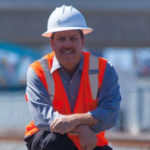
Carlo Luzzi
My Memory of Alameda Corridor…I started my career at the Port of Long Beach back in 1988. I can remember driving in the 1980’s and 1990’s and seeing the curvy tracks along Alameda Street. The curvy tracks along Alameda Street started at the Ports and ended in East Los Angeles. This was the reason it
…
My Memory of Alameda Corridor…I started my career at the Port of Long Beach back in 1988. I can remember driving in the 1980’s and 1990’s and seeing the curvy tracks along Alameda Street. The curvy tracks along Alameda Street started at the Ports and ended in East Los Angeles. This was the reason it took several hours to get a train from East Los Angeles to the Port complex. The twin Ports of Long Beach and Los Angeles created the Alameda Corridor and I was part of it. As representative from the Port of Long Beach, I would attend many, many meetings for the planning, construction and oversight of operations of the Alameda Corridor. I attended the grand opening of the Alameda Corridor back in April 2002 and the Redondo Junction dedication. I can remember the USC Marching Band playing at the event.
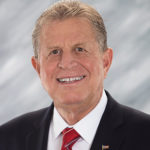
Frank Colonna
As someone who was on the Long Beach City Council in the late 1990s and the early 2000s when the Alameda Corridor was being completed and opened, I feel a special bond to this unique railway. The Corridor is such an important piece of the supply chain puzzle for the San Pedro Bay ports, and
…
As someone who was on the Long Beach City Council in the late 1990s and the early 2000s when the Alameda Corridor was being completed and opened, I feel a special bond to this unique railway. The Corridor is such an important piece of the supply chain puzzle for the San Pedro Bay ports, and it’s been my honor to continue to have served on the Governing Board of ACTA, thanks to my position on the Long Beach Harbor Commission. The first 20 years are only a start for the Corridor, which addresses both goods movement and good neighbor priorities, thanks to its grade separations that both help freight to move faster and spare the community from the burden of at-grade crossings. I commend the staff at ACTA, and the ports of Long Beach and Los Angeles, for continuing to expand and explore the Corridor’s true potential.
